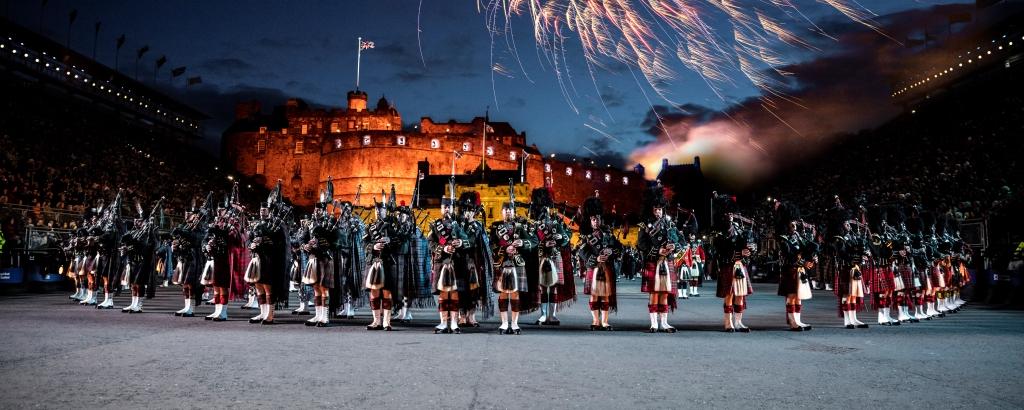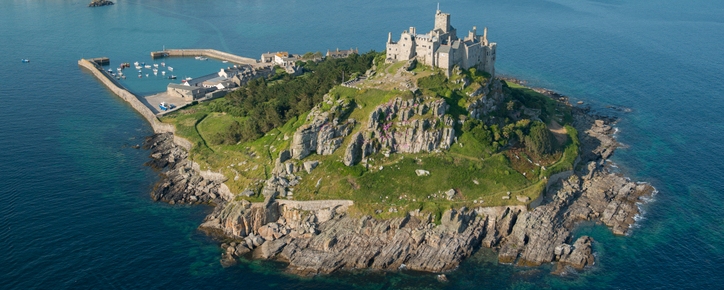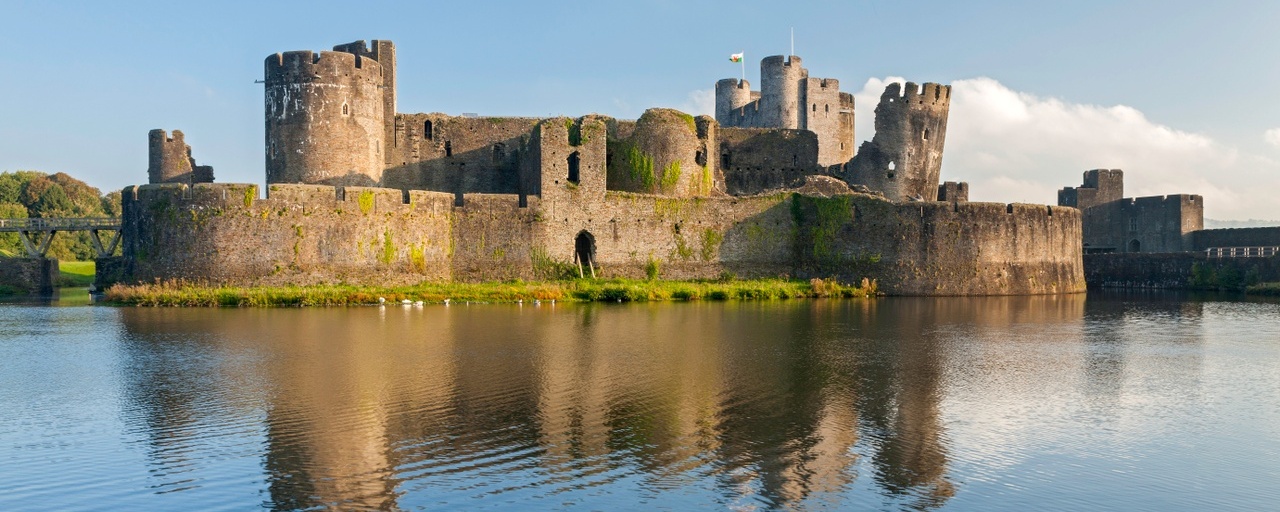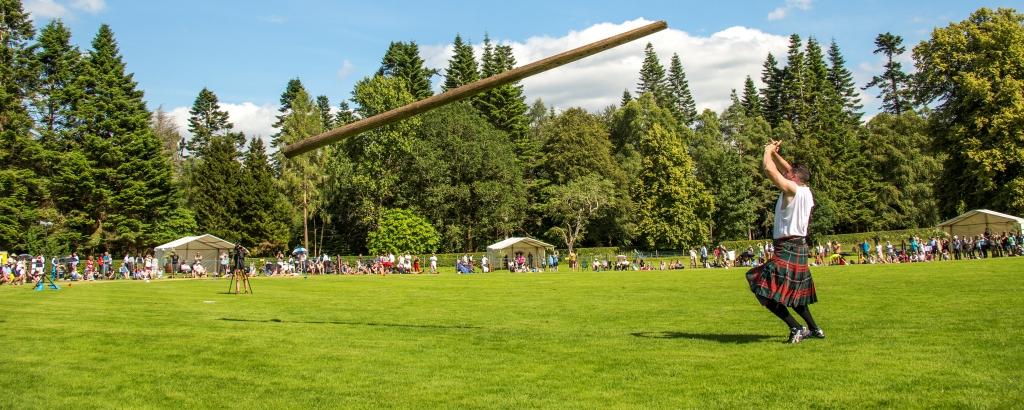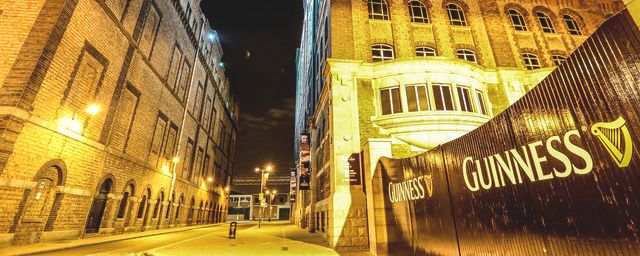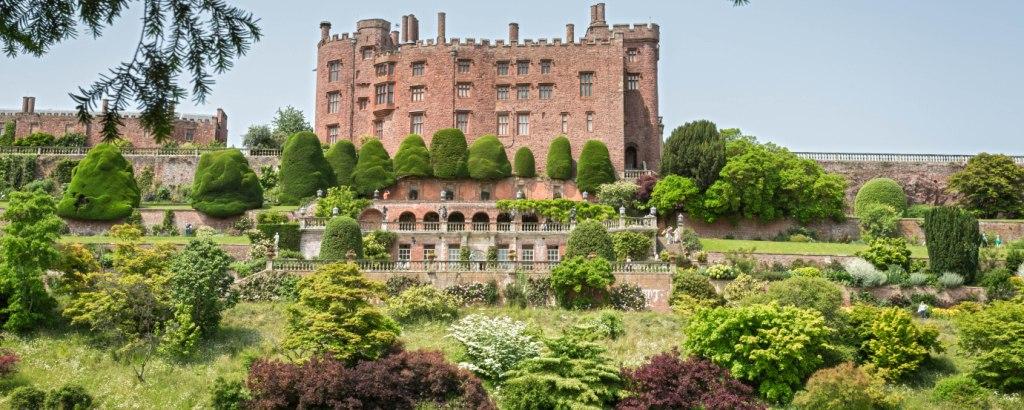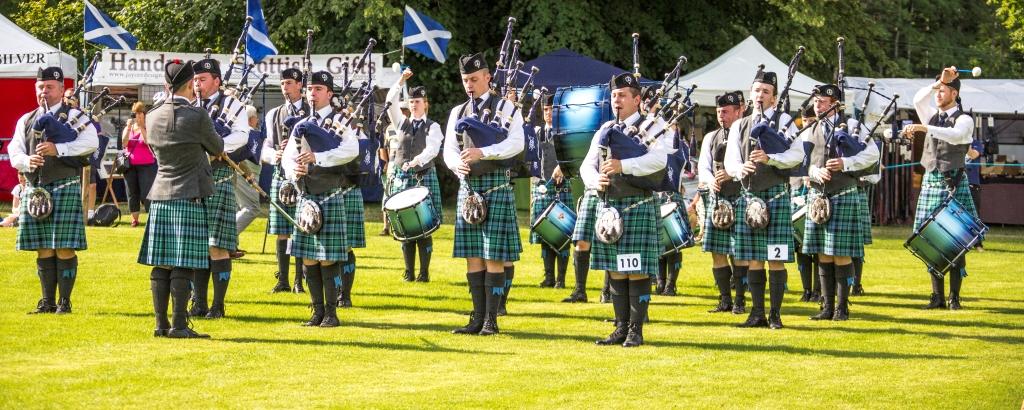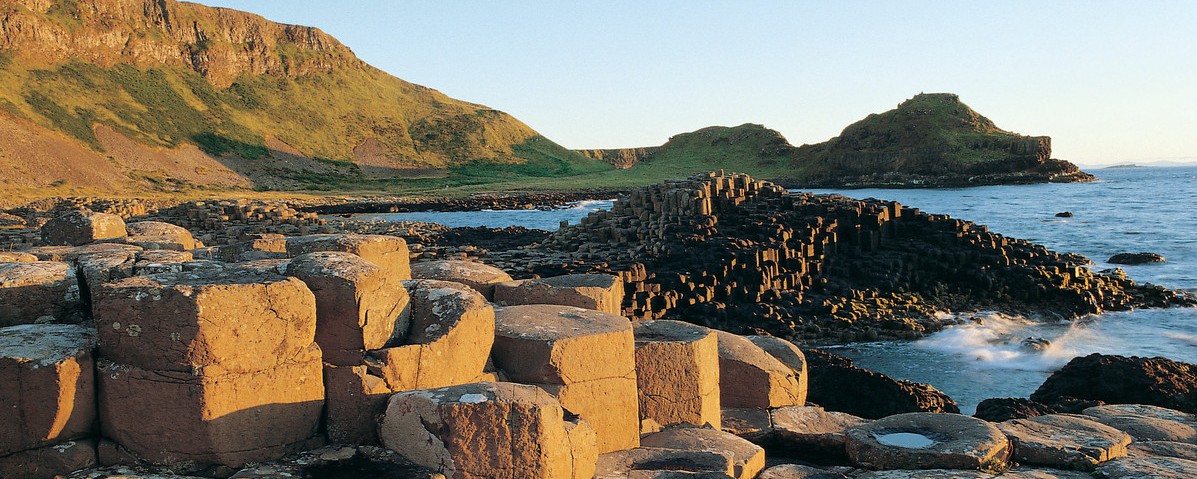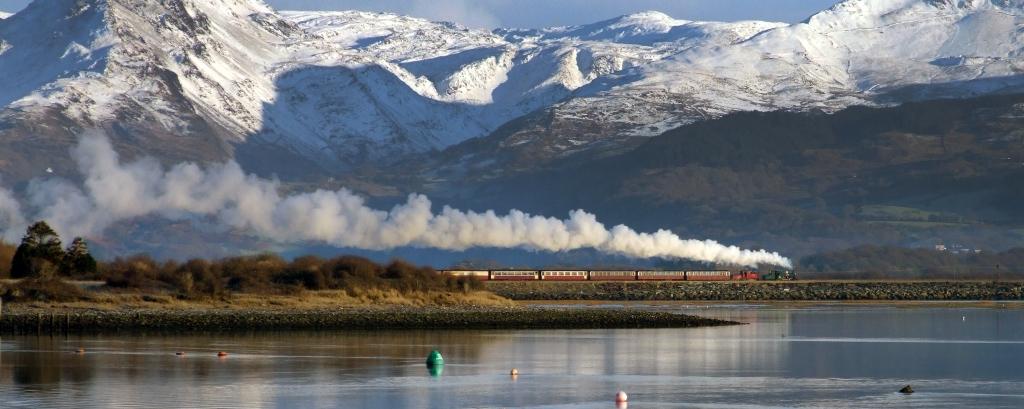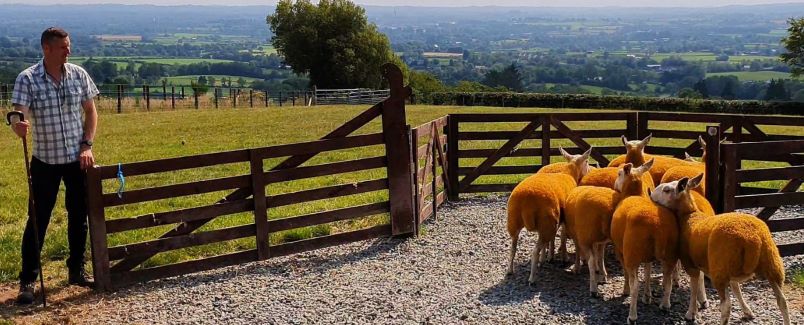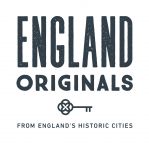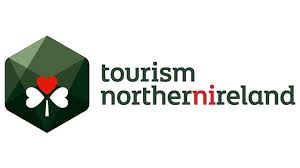The threads of history
As a new exhibition opens at London's Fashion and Textile Museum, Mr Londoner explores the fascinating story of textiles through the ages.
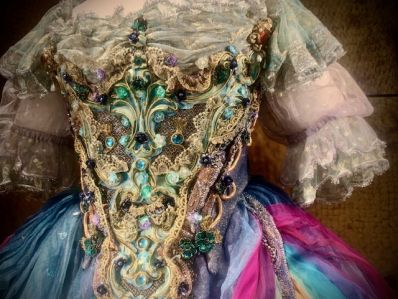 Detail from the dress designed by David Walker for Royal Opera House production of Semele in 2003 @meetmrlondoner
Detail from the dress designed by David Walker for Royal Opera House production of Semele in 2003 @meetmrlondoner
Textiles: The Art of Mankind, which runs until September at London’s Fashion and Textile Museum, 'celebrates the ancient and deep entanglement between textiles, people and our world... They carry sacred significance, express our cultural regard for animals and symbolise life’s mysteries'.
Textiles are woven throughout British history. The Order of the Garter is Britain’s leading order of chivalry. The story goes that in 1348, while dancing with King Edward III, the Countess of Salisbury lost her garter in a wardrobe malfunction. So angered was the monarch by his courtiers’ ungentlemanly reaction, that he moved swiftly to spare the Countess’s blushes. Edward turned the garter - previously an item of lingerie - into a symbol of masculinity, worn on the arm into battle. “Honi soit qui mal y pense!" (“Shame on him who thinks ill of it!”) was said to be the king’s furious response to his sniggering courtiers. These words now form the motto of The Order of the Garter. Naturally, its design features animals - the lion and the unicorn - the heraldic symbols of Britain.
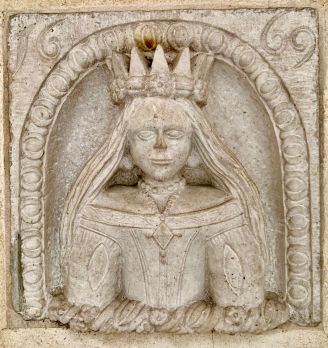 The Mercers' Maiden may have inspired the logo of a well-known coffee brand @meetmrlondoner
The Mercers' Maiden may have inspired the logo of a well-known coffee brand @meetmrlondoner
Mercers’ Maidens
England’s medieval fortunes were built on the wool and weaving trade. It remained central to economic, social and political life, so much so that there’s a seat called The Woolsack in the House of Lords. It’s occupied by The Lord Speaker. The City of London thrived on its medieval trade guilds. They regulated and represented ancient professions from skinners to pewterers. Although there’s not much animal skinning taking place in the city today, there is banking, insurance and foreign exchange.
The Mercers’ Guild, with its 12th-century origins, represented the wool and textile industry. It remains number one of the Top 12 of the City’s Guilds. It’s Mercers’ Maiden symbol can be spotted throughout the City and around Covent Garden. The Maiden’s flowing locks and crown look remarkably similar to the Starbucks logo, which arrived eight centuries later. November’s Lord Mayor’s Show is a great opportunity to admire heritage textiles in the City of London. The guilds remain a major feature among a giddying display of costumes, armour and pageantry.
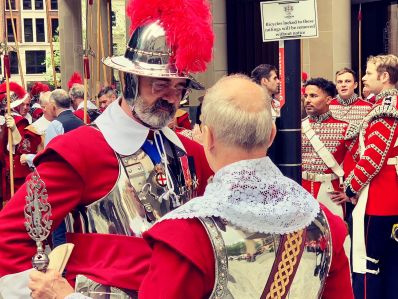 Pageant master Dominic Reid at the Lord Mayor's Show @meetmrlondoner
Pageant master Dominic Reid at the Lord Mayor's Show @meetmrlondoner
Tudor power dressing
Textiles and art are closely interlinked. Henry VIII’s court painter Hans Holbein understood branding. He became the style-meister of his age - the Giorgio Armani of the 16th century. That whole broad-shouldered Henrician look was all Holbein’s own work. His most famous portrait, The Ambassadors, hangs in the National Gallery in Trafalgar Square. It spotlights the look. You can see it for free.
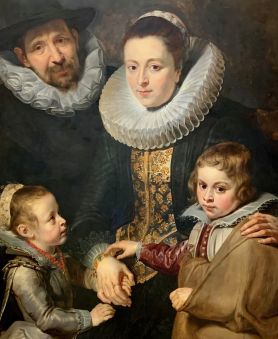 Ruffs got bigger as time went on. Detail of The Family of Jan Brueghel the Elder, Peter Paul Rubens, Courtauld Gallery.
Ruffs got bigger as time went on. Detail of The Family of Jan Brueghel the Elder, Peter Paul Rubens, Courtauld Gallery.
There’s more free content next door at the National Portrait Gallery. The 1592 Ditchley Portrait of Henry’s daughter, Elizabeth I was painted by Flemish master Marcus Gheeraerts the Younger. He depicts the queen (who in 1588 had seen off the might of the Spanish Armada) bestriding the world like an all-conquering colossus. Elizabeth wears an amazing ‘farthingale’ corseted dress. She drips in pearls and sports a huge butterfly-like ruff at her neck. The Elizabethan reign saw women’s shapes become deliberately more masculine. Ruffs got bigger - ridiculously bigger - as time went on. Then as now, art reflects the fickle face of fashion.
Huguenots
Huguenots (exiled French Protestants) shaped the 18th century Spitalfields area of London. They were skilled silk-weavers and built elegant townhouses incorporating rooftop workshops. Textile manufacture was dominated by Jewish makers by the late 19th century. The Jewish community was replaced, post-war, by newly-arrived people from South Asia.
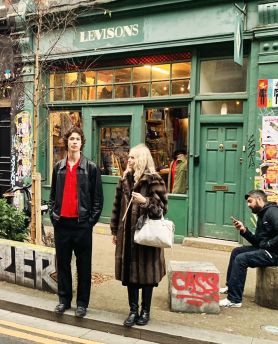 Levisons is one of London's very best vintage shops and attracts a cool crowd @meetmrlondoner
Levisons is one of London's very best vintage shops and attracts a cool crowd @meetmrlondoner
Spitalfields maintains a distinctly creative air. It’s still a fine place to explore textiles. Vintage shops like Levisons specialise in militaria and workwear. Hunky Dory is great for 1950s clothes. The Spitalfields Thursday Flea Market is a reliable source of vintage textiles. A sharp eye might spot mud cloths from Mali and Congolese Kudo cloths (made from palm leaves).
 Brick Lane's Hunky Dory is a great vintage shop @meetmrlondoner
Brick Lane's Hunky Dory is a great vintage shop @meetmrlondoner
The Colour Walk, where creative types parade in eccentric hand-made costumes, runs here on the third Thursday of the month. Witty outfits, crafted from pre-loved fabrics, are adorned with bric-a-brac and found objects. The event manages to be both outrageous and transgressive - but also friendly and inclusive.
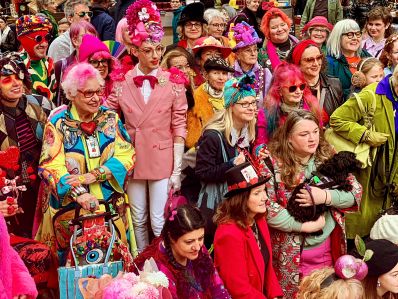 The Spitalfields Colour Walk @meetmrlondoner
The Spitalfields Colour Walk @meetmrlondoner
The former Truman Brewery houses the Brick Lane Vintage Market of over 60 independent retailers. Some of them, like Magpie Vintage and Frock-U, re-make clothes out of recycled textiles. The results are always original and often startling.
Taylor Swift
The V&A is the world’s largest museum of design. Last summer thousands of visitors flocked to see Taylor Swift’s concert outfits. The incredible fashion collection here includes Victorian daywear, diaphanous 1930s gowns and Vivienne Westwood’s 1980s Buffalo Gal designs. You might even find Harry Styles’s cardigan. This inspired keen knitters to re-interpret its design during lockdown, the pattern having gone viral on Instagram.
 The V&A does painting and photography as well as fashion @meetmrlondoner
The V&A does painting and photography as well as fashion @meetmrlondoner
There are textiles in surprising places. You can admire stunning Royal Opera House costumes while enjoying coffee and a cake in its auditorium. Head south of the river to the Royal Festival Hall to see the Patchwork of the Century quilt, made for the 1951 Festival of Britain. Women in west London embroidered 100 squares, each representing a year between 1851 to 1950. We see the Crystal Palace Great Exhibition, Victorian inventions and illustrations of war and peace. This is literally a patchwork of British history.
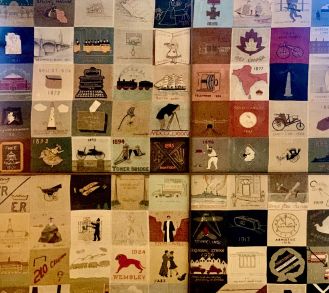 The Patchwork of the Century quilt, Royal Festival Hall @meetmrlondoner
The Patchwork of the Century quilt, Royal Festival Hall @meetmrlondoner
Mr Londoner is writer, broadcaster and former museum director Antony Robbins. He runs history and styling tours in London focussed on textiles, making and menswear.
If you or your group would like to enjoy a visit to Textiles: The Art of Mankind at London’s Fashion and Textile Museum on a tailor-made tour of London in 2025, please do contact our friendly team today. Or perhaps you would like to take a dedicated Quilting and Patchwork Tour - if so, we can help!
